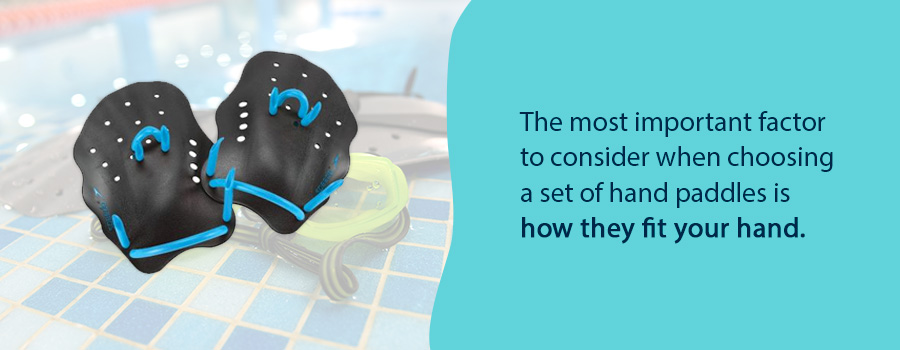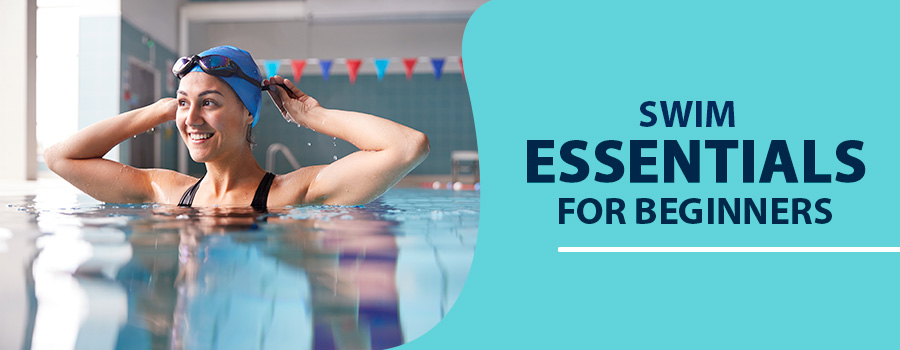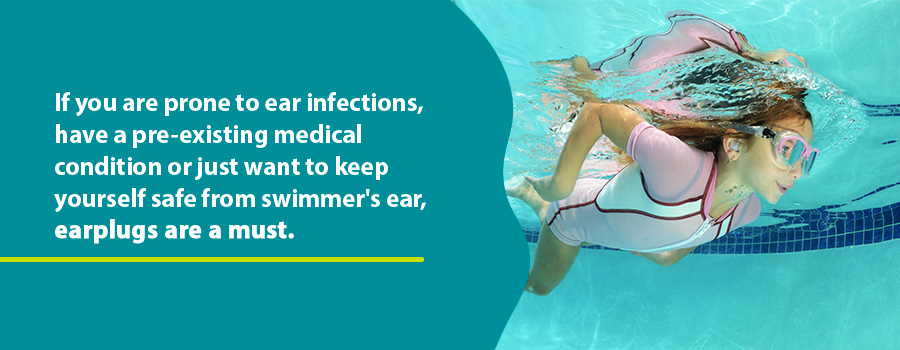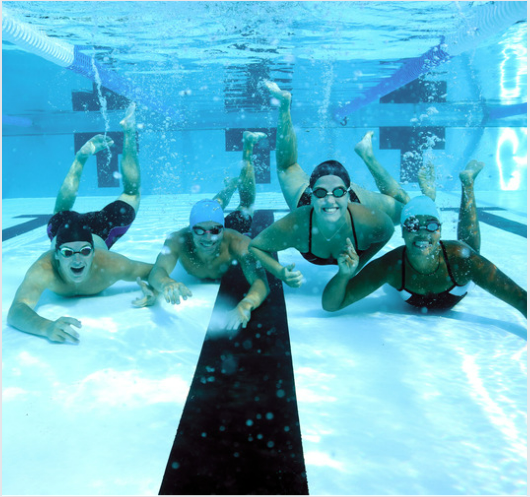Swim Essentials for Beginners

Learn To Swim
|
October 25, 2022

Swim Essentials for Beginners
People start swimming for many reasons. It's good exercise, it helps build and tone muscles, it relieves stress, and it's a fun way to pass the time. If you're just starting out, you might be unsure what you need for swimming equipment. Some equipment is designed to keep you safe and comfortable, while others are tools you can use to train your body and improve your swim performance. No matter what your swimming goals are, here is everything you need to know about swim essentials for beginners:Goggles
Goggles are an important piece of safety equipment for all swimmers, regardless of experience. Goggles allow you to see clearly when swimming both above and underwater, protect your eyes from UV exposure and help keep your eyes safe in chlorinated pool water, freshwater and saltwater. Pool chlorine is a safe combination of hypochlorous acid and hypochlorite ions that is not dangerous on its own. When it reacts with dirt, debris and bodily fluids in the pool water, however, it can irritate your eyes and strip away some of the protective layer of film that keeps your cornea safe. When this happens, your eyes become prone to further irritation, like burning and itchy eyes, temporarily blurry vision or exposure to bacteria that can cause conjunctivitis, better known as pink eye. Swimming in seawater is typically easier on your eyes than chlorine, but can still lead to discomfort. "Surfer's eye" is a term coined to describe general eye irritation caused by salt, wind and sun exposure. Goggles are also useful in combatting seawater bacteria. Goggles can keep your eyes safe from all these threats and more. The most important part of selecting a pair of goggles is making sure they are a good fit:- The nose piece: Look for goggles that have an adjustable nose piece, or a stationary nose piece that fits securely across your nose. If your nose piece is too wide, your goggles will leak. Nose pieces that are too small can pinch your skin.
- The strap: When you try on your goggles for the first time, do so without attaching the strap. Press them against your eyes and see that the seals rest comfortably against your skin without gapping. Then, attach the strap and adjust it until it keeps the seals pressed against your skin. Avoid over-tightening your strap, or you will cause red lines to form around your eyes.
- The lenses: Choose the color of your goggle lenses based on the place you swim most often. If you swim outdoors, choose a tinted lens to keep the sun out of your eyes. For indoor swimmers, a tinted lens may be too dark to see well underwater. Some lenses are also treated with features like anti-fog or UV protection.
Swim Cap
Swim caps are among the most useful swim essentials because they provide the following benefits:- Mobility: Swim caps create a smooth, uniform surface for water to move across. This can give you an advantage in speed and mobility.
- Protection: Although swim caps cannot keep your hair completely dry, they do protect your locks from the majority of chlorine or saltwater related dehydration. Caps can also keep your hair in place, so it is not flowing in front of your eyes or into pool drains. If you're swimming in open water, brightly colored swim caps can also boost your visibility and keep your head warm on cold days.
- Security: If you have trouble keeping your goggles secured to your head, consider putting them on over top of your swim cap for additional traction.
- Hygiene: Some pools require swim caps to keep water free of loose hairs and residue from hair care products.
- Consider the temperature of the water or swim setting. Some caps provide more insulation, while others are designed for ventilation.
- Make sure you can secure all of your hair tightly under your cap to avoid slippage.
- Choose a cap based on what type of swimming you will be doing. If you plan to submerge your head or swim laps, you'll need a more waterproof design. If you are doing mostly above-water exercises or training, something lightweight and well-ventilated should be fine.
Comfortable Swimwear
Whether you wear swimming trunks, boardshorts or a bikini, anyone who has spent time in a pool wearing a poorly fit swimsuit knows how uncomfortable it can be. A swimsuit for beginners should be both comfortable and supportive, but also suited toward your pool-time preferences. If you plan on being very active or are going to swim in rough ocean waves, choose a suit that won't budge easily. Consider investing in a rashguard to go under your swimwear. A rashguard is ideal for anyone who spends a lot of time in the water, particularly if you engage in high-intensity exercise or prolonged laps. These thin, moisture-wicking garments can keep your skin safe from chafing and UV exposure. Shop SwimwearEarplugs
If you are prone to ear infections, have a pre-existing medical condition or just want to keep yourself safe from swimmer's ear, earplugs are a must. Swimmer's ear is an infection of the ear canal that occurs when water becomes trapped inside. Symptoms include pain, itching, redness and difficulty hearing. Though symptoms are minor, they can evolve into a more serious condition over time. The best way to stay safe and avoid injury is to invest in a pair of earplugs that fit both securely and comfortably in your ear. Make sure they are designed for use in water.
Nose Clips
Nose clips are ideal for young swimmers who are still mastering how to hold their breath underwater, or for new swimmers learning how to breathe through their mouth during laps. They can also help block harmful bacteria from entering your body through your nose. Nose clips are usually made out of silicone, making them flexible and durable in the water. They are available both with and without a strap to hold them in place and come in a variety of different colors and designs. When you try a pair of nose clips, make sure they are not pinching you too tightly, but that they are secure enough to stay on your nose when propelling through the water.Swim Fins
If you're swimming to train, exercise or improve your skills, swim fins are a great place to start. Swimmers looking to strengthen their flutter kicks use swim fins to warm up and strengthen ankle muscles, which can help prevent injury or strain. Take your time when choosing your swim fins — there are many different types available. For example, swim fins designed for scuba diving will not be suitable for swimming in a pool. Swim fins vary in length, and some are designed to target specific areas of swim training, like breaststroke or increasing speed. Once you've chosen the right pair, educate yourself on how to use them safely and efficiently.Kickboard
Kickboards are another popular, powerful training tool for new swimmers. By holding on to a kickboard, you can focus your attention on your legs and perfect your form, which is crucial when developing a positive swim routine. Kickboards can also keep new swimmers afloat while learning the basics of treading water. You can find kickboards in several different designs and colors, making it easy to choose one that fits your personality and swimming goals. To use a kickboard, place your hands at the top or sides of the kickboard, or through the holes if applicable. Always keep your arms straight and head still while kicking. Ask a swim instructor or lifeguard for more information about using a kickboard to become a better swimmer.Hand Paddles
Hand paddles are used to perfect different arm strokes, as they position your hands correctly for optimal gliding. Hand paddles can also improve your agility in the water. Paddles can be flat, ergonomic or targeted toward specific types of strokes. Some have holes, which let you swim faster and provide less resistance than solid paddles, which are better suited for resistance training. The most important factor to consider when choosing a set of hand paddles is how they fit your hand. For the best results — and to avoid potential injury — choose a paddle that is slightly bigger than your hand.
Swim Snorkel
Snorkels are for more than kids and vacationers — they are also on many beginners' must-have swimming items list. Swimming with a snorkel can help you improve in many areas of your swimming routine. For example, they can help:- Improve your arm strokes
- Keep your face in the water
- Develop a stronger kick
- Perfect your form in the water
- Prevent muscle injury or strain







Leave a Comment
Your email address will not be published. Required fields are marked *